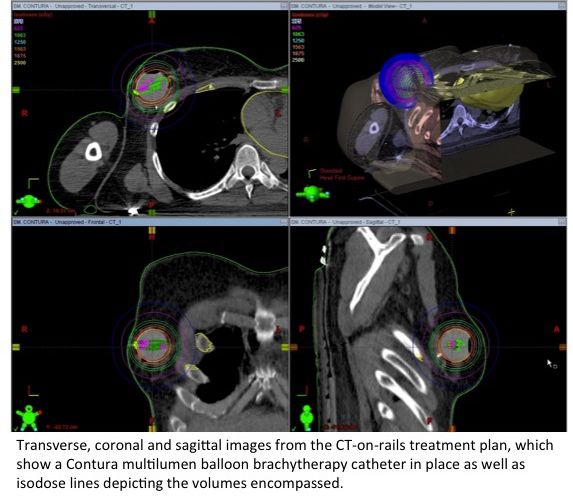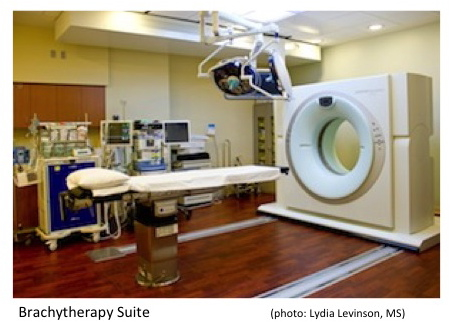 For patients with early-stage breast cancer who choose to be treated with breast-preserving therapy, the use of intraoperative radiation therapy (IORT) significantly reduces treatment time. The breast specialists at University of Virginia Cancer Center are now utilizing an enhanced form of IORT that will allow for improved treatment planning and greater precision.
For patients with early-stage breast cancer who choose to be treated with breast-preserving therapy, the use of intraoperative radiation therapy (IORT) significantly reduces treatment time. The breast specialists at University of Virginia Cancer Center are now utilizing an enhanced form of IORT that will allow for improved treatment planning and greater precision.
Traditional IORT is offered at a handful of centers across the state. “The concept of IORT — delivering the entire dose of radiation at once rather than over a six-week period — is not entirely unique,” says UVA breast surgeon David Brenin, MD. “But the way we are performing this procedure, we believe, will result in superior outcomes.”
Merging Technologies for Optimal Results
Currently being evaluated in an ongoing feasibility trial, the UVA approach to IORT combines this one-time treatment with computed tomography (CT)-on-rails-directed brachytherapy, advanced technology incorporated into UVA’s state-of-the-art brachytherapy suite. “Most operating rooms do not have this image-guidance technology,” says Brenin. “This suite allows us to accomplish treatment planning, surgery and radiation all at the same time.
 “Essentially, we are taking the most advanced radiation therapy tools that we use for breast brachytherapy, and using CT-on-rails technology to streamline the treatment for delivery at the time of surgery,” says radiation oncologist Timothy Showalter, MD.
“Essentially, we are taking the most advanced radiation therapy tools that we use for breast brachytherapy, and using CT-on-rails technology to streamline the treatment for delivery at the time of surgery,” says radiation oncologist Timothy Showalter, MD.
Enhanced treatment planning is one of the key distinguishing factors between traditional IORT and this combined treatment. After the tumor is removed by surgeons and prior to radiation, the radiation oncologist and breast surgeon use computerized treatment planning, evaluating anatomical variances and shape of the treatment zone, to better sculpt the radiation dose so that it encompasses the area closest to the tumor.
Further increasing the accuracy and efficacy of radiation delivery is the use of a multichannel balloon applicator that allows the dose to be tailored, avoiding the chest wall and allowing for a customized dose of radiation, according to Showalter. “With traditional IORT, you place an approximate size sphere in the cavity and turn on the machine, which is typically a mobile device,” he says. “With the balloon applicator and established brachytherapy treatment unit, we can carve the dose away from skin tissue, chest wall and heart to reduce complications and deliver a higher dose to the tumor bed.”
A Promising Start
Since the start of the clinical trial in December, the combined IORT and CT-on-rails-guided brachytherapy procedure has been performed on three patients at UVA with positive results, according to breast surgeon Shayna Showalter, MD. “We have taken their treatment time from six weeks down to the time of surgery, so they are thrilled,” she says. “Patients have the surgery and go home the same day so it’s much more convenient.”
While it’s still very new and outcomes will continue to be evaluated, IORT is a promising alternative. It is an option that drastically reduces treatment time for women with early-stage breast cancer who choose to be treated with breast-conserving therapy and require radiation therapy.
For more information about the IORT study at UVA, call 434.924.9479.